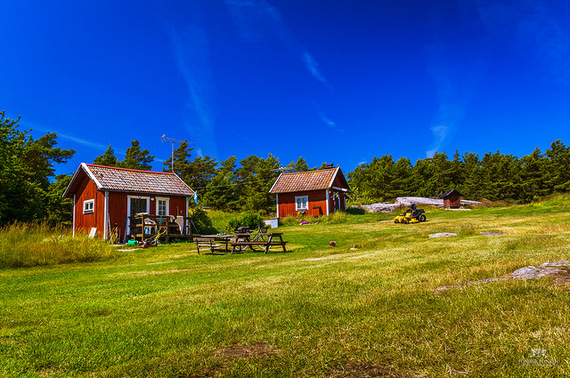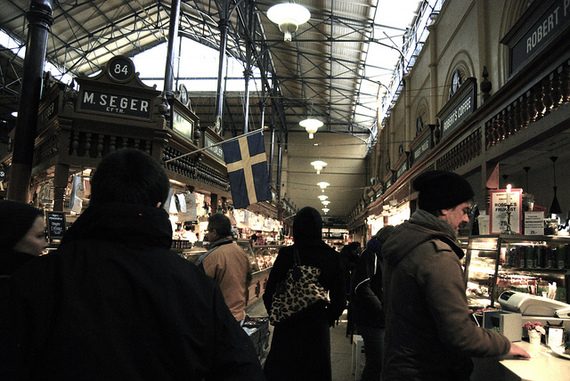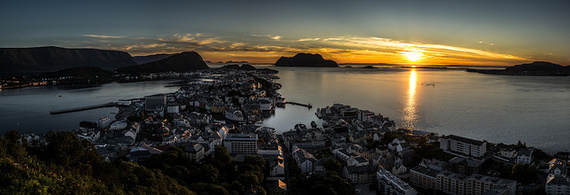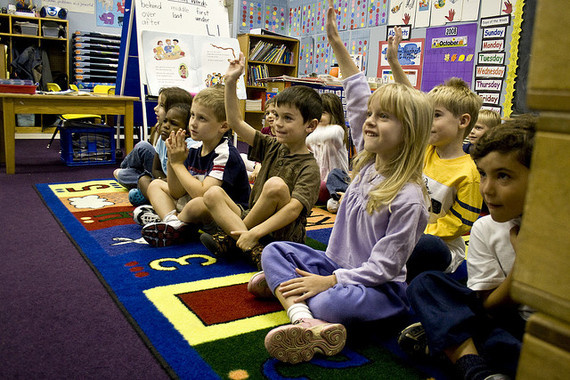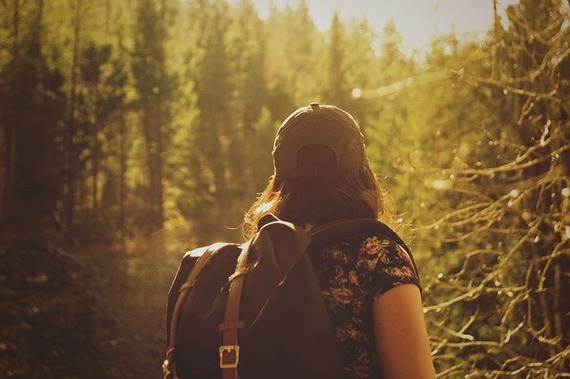This (incomprehensive) list will hopefully enlighten you about some aspects of living in Norway, Sweden and Finland. (And yes, I know that I've forgotten all about Denmark and Iceland, but I'm not that familiar with these countries, so I'm going to focus on the other three, though there are, of course, similarities.)
1. Adjust to Pricey Housing
Although the Nordic countryside might appear to be the very picture of tranquility and natural beauty, a growing number of locals prefer city life, causing the already hefty housing costs to rise even higher. These expenses have experienced a particular increase during the last couple of years; the high standard of living naturally has its costs, but there has been some debate in the public about the possibility of a real estate bubble. Whether or not this is the case, anyone about to move to the Nordic countries in the near future should be prepared to pay more than they might be used to for their housing (unless you are from New York or London, of course).
Once you manage to find a reasonably priced apartment close to the city center, you better stick to it. After moving in, just locate the closest IKEA and get some affordable furniture -- or if you prefer more exclusive classiness, there certainly is no shortage of high-quality (and high price) designer furniture; Nordic countries are renowned for their simple and timeless home design.
Assuming you intend to live as a hermit in the wilderness, on the other hand, the housing costs are significantly lower. Many municipalities in the north are having issues with the net emigration, which has caused the real estate prices to fall in rural areas.
2. Acknowledge the Reserved Nature of the Locals
Scandinavians and people from Nordic countries in general are often stereotyped as shy and reserved, and -- depending on what you are used to and what exact place you relocate to -- you might discover that the rumors aren't entirely based on fiction. If you find yourself in an elevator with a local, it's advised not to start a conversation, as you will likely end up being labeled as a creepy weirdo. Instead, it's better to stare at your feet (or the ceiling) or start fiddling with your iPhone. Giving a subtle smile is a nice gesture, although by no means necessary.
However, in major cities like Stockholm, the atmosphere is, of course, much more multicultural than in the countryside; you might occasionally end up in a small-talk situation. Still, these cases are sparse compared to most other countries. Many cities do fortunately have a lot of other expats, and communities like InterNations can help you find new friends.
Despite being perhaps slightly taciturn, most local residents are polite and usually have a good command of foreign languages (some reluctance to actually demonstrate these linguistic skills might occur, though). Decent manners are expected from everyone, and jumping the queue or pushing people in a rush are widely disapproved of.
In general, they are very open-minded towards foreign people and cultures: racial or other discrimination is uncommon and again, disapproved of by the majority.
3. Be Prepared for the Winter Blues
Norway, Sweden, and Finland cover one of those regions of our planet where all four seasons can be experienced to their full extent. Chilly winters and warm, pleasant summers let you enjoy the true diversity of the Nordic nature -- assuming that you dress accordingly. Unlike in many other countries, the infrastructure is made to withstand extreme weather conditions; commuter traffic (usually) runs smoothly and houses stay warm even during the heaviest snowfall.
In fact, often it's not the seasonal temperature or climate that is the biggest issue for foreigners. Due to the proximity to the polar circle, the length of the day depends heavily on the time of the year; during the summers the sun hardly sets at all (in the north of the Scandinavian peninsula it actually does not set) and in the winter the daylight is limited to just a few hours.
This feature tends to have an effect on sleeping patterns: those not used to having the sun up at 2:00 a.m. might experience some confusion. Also, considering the sunlight's influence on our mood, winter depression is unfortunately rather common.
4. Bring Your Family Along
Having already embraced the idea of social democracy a century ago, the Nordic countries feature some of the most comprehensive welfare services in the world. Those who benefit most obviously are families with children, who enjoy free, high-quality education and healthcare. There are international private schools, of course, but parents planning a longer stay are recommended to enroll their offspring in a state-owned school.
The Nordic countries have always practiced heavy income redistribution through steeply progressive taxation; this factor has played a major role in making the region one of the most "equal" places there is. The idea is to provide everyone with the same opportunities in life and this goal has been more or less achieved. Unfortunately, this also means that high income families should be prepared to have a large chunk of their salary taken by the government.
The municipal taxes and taxes on capital income are almost flat rates, however.
5. Get Into the Gorgeous Nature
Although beauty is in the eye of the beholder, there is hardly anyone who would disagree about the appeal of the breathtaking Norwegian fjords, picturesque Åland Islands in the Baltic Sea or the arctic mountains in Lapland. The locals are rather outdoorsy folk, with many of them having a summer cottage by the seaside or a lake. Even the most populated areas -- the capitals Stockholm, Oslo and Helsinki -- have large green areas and parks scattered across the city, often occupied by families or students. Recommended parks include Hagaparken in Stockholm, Kaivopuisto in Helsinki and Frognerparken in Oslo.
While not everyone loves winter sports, many people do, and you should not miss the opportunity to ski during your stay. The slopes may not be as impressive as those in the Alps but skiing is a popular winter activity nevertheless. During the summer, sailing and hiking are widely enjoyed.
Whichever country you end up relocating to, congratulations on your choice! You're not going to regret your decision.
